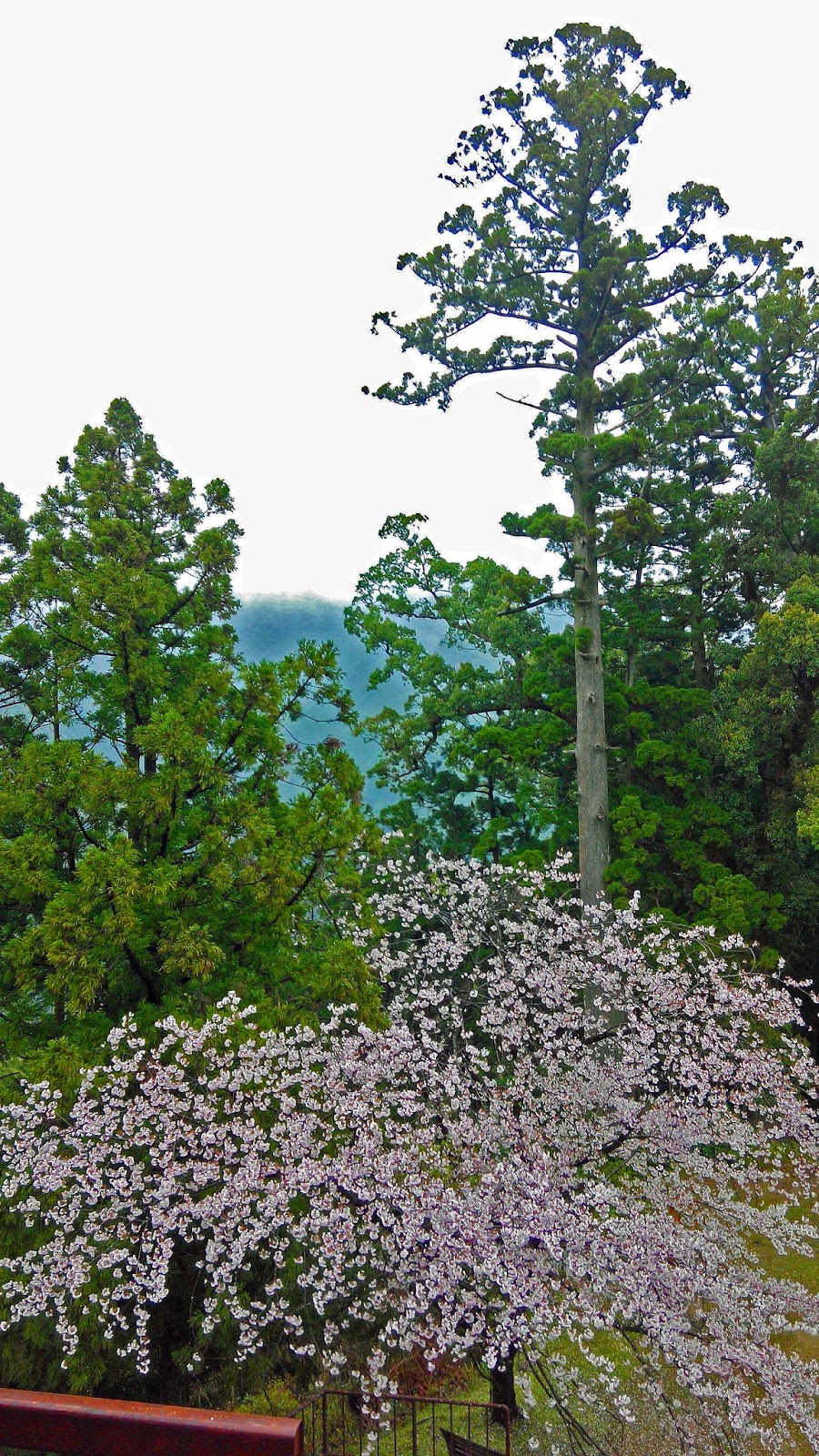 |
| The site of Tahuke-ooji |
This is the last ooji-sha (prince shrine) of Kumano Ninety-Nine Ooji. During 12th - 13th century, the visitors and nobles, who came to Kumano for pilgrimage, built a lot of shrines along the paths. These shrines, called as ooji-sha, were used as resting place or accommodation in the past. Waka (japanese poetry) event was also held in these places to pray for the safety during the pilgrimage.
Ninety-Nine Ooji does not mean 99 shrines had been built, but have a meaning of many in number. Although 'ooji' means prince in japanese, it actually represents the mikogami, the children god, of Kumano Gongen (The gods of Kumano Sanzan, or the Three Kumano Mountains). However, the phrase of 'ooji' did not appear in Hei'an literature, but found in Edo literature (17th - 19th century).
According to the introduction board, a shrine was built at here during Edo period. It was then moved to the vicinity of Kumano Musumi Shrine (currently known as Kumano Nachi Grand Shrine) at 1877. Therefore, a stone was placed at here to show its original site.
Small stone pillars (right) could be seen along the pilgrimage path. It shows the distance from meoto-sugi. One cho equals to approx. 109 meter.
There is an 800-year-old of Nan Tree (Phoebe zhennan) few steps ahead. Its base has decayed but locals used ropes and other means to hold it still.
 |
| Nan Tree (middle) |
 |
| The second Cho |
 |
| The turn beside the second Cho |
 |
| The straight pilgrimage path, tall firs are arranged neatly along the path |
Although we had walked so far in distance, we did not sweat at all because of the cold weather. We need to be careful while walking on the uneven stone pathway, however, it also makes us forget to enjoy the lush leaves above our head.
 |
| Site of Jyuichimonkan, a place where toll was collected in ancient times |
 |
| Compare with the tall firs, man is so small in size |
 |
| Totoseki. Small stones, which served as a symbol of wishes, are spread on the Totoseki. |
The entire Daimonzaka is about 650 meter. A very big door was used to exist in this end point. This is why this path is named as Daimonzaka, Big Door Slope in japanese.
Rest station and carpark could be found in front. We decided to take a rest as it's raining heavily outside.
 |
| Cherry blossom on the hill |
 |
| Mountain was surrounded by mist. It looks like a paradise out there. |
 |
| View of the end point of Daimonzaka |
Souvenir shops could be found after a right turn from rest station. Sculptures, which made by Nachi black stone, could be seen here. These sculptures are mostly with themes of animals or Avalokitesvara (or Kannon in japanese). Besides that, souvenirs with a theme of yatagarasu (three-legged crow) could also be seen.
After walked pass these shops and climbed up the steep stairs (Omotesando), Kumano Nachi Grand Shrine and Seiganto Temple are located at the hilltop.
After walked pass these shops and climbed up the steep stairs (Omotesando), Kumano Nachi Grand Shrine and Seiganto Temple are located at the hilltop.
Next:
The God's Sacred Place, Kumano Nachi Grand Shrine








No comments:
Post a Comment